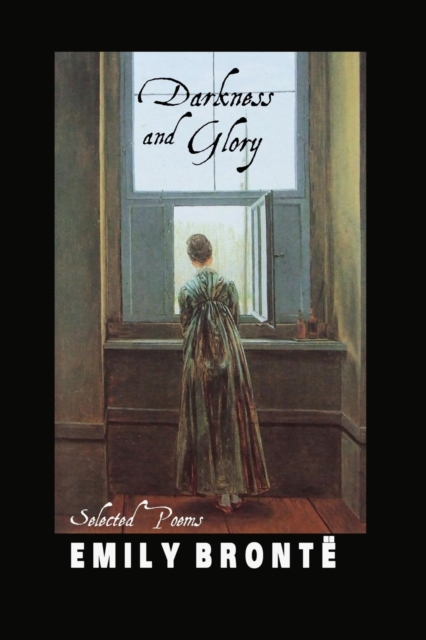EMILY BRONTE: DARKNESS AND GLORY: SELECTED POEMS This book collects together Emily Bronte's finest poems. Includes an introduction and notes, extra poems for this edition, and a new gallery of images based on Bronte's work.
EXTRACT FROM THE INTRODUCTION
EMILY BRONTE as a poet is still neglected today. Her novel Wuthering Heights, however, remains one of the great English novels. It continues to sell, continues to be adapted for radio, theatre, film and television, continues to inspire readers and be cited by critics.
Wuthering Heights has entered British culture as both a serious work in academic circles and a series of cliches in popular culture. For scholars, Wuthering Heights is a superbly crafted and atmospheric piece of fiction which takes its place beside the great works of the 19th century (Tess of the d'Urbervilles, Middlemarch, Great Expectations, Pride and Prejudice). For feminists, Emily Bronte has been appropriated as a proto-feminist, working largely in isolation in patriarchal Yorkshire, away from the metropolitan centres of culture, yet producing fiery fiction and poetry. For the general reader, Wuthering Heights is a fabulously moody, passionate and romantic book, with a powerful sense of pace, fully rounded characters and a thrill of mystery about it.
The wind whistling through the heather in Winter is indeed the atmosphere of Wuthering Heights, and also of Bronte's poetry. In poem after poem we find loving evocations of the moors: we hear of 'the breezy moor' (in -The starry night shall tidings bring-), the 'flowerless moors' (in -How still, how happy! Those are words-), and of 'the moors where the linnet was trilling/ Its song on the old granite stone' (in -Loud without the wind was roaring-, the most powerful of Bronte's moor-poems).
The key element of the moors is the expanse of sky and the wind that rages across it: the wind is without doubt Bronte's favourite element, and is the sound that accompanies the cliched adaptions of Wuthering Heights. In the poetry we hear of 'The wind in its glory and pride!' (-Loud without the wind was roaring-), 'the life-giving wind' (-High waving heather 'neath stormy blasts bending-), 'That wind, I used to hear it swelling/ With joy divinely deep' (-That wind, I used to hear it swelling-), 'the wailing wind' (-All hushed and still within the house-), 'And winds shall wage a wilder war' (-How still, how happy!-), and 'The wild winds coldly blow' (-The night is darkening round me-).
These simple, elemental facts - the heather, the moor, the wind, the night - are what recur in Emily Bronte's poems, time after time. Dells, snow, linnets, rocky crags, greyness, darkness, graves; one can practically see her composing her lines as she sits in a darkened house at night, with the wind whistling outside.
The text has been revised for this edition. It includes new poems.
Includes new illustrations of Bronte and her works, a full bibliography and notes.
www.crmoon.com 
